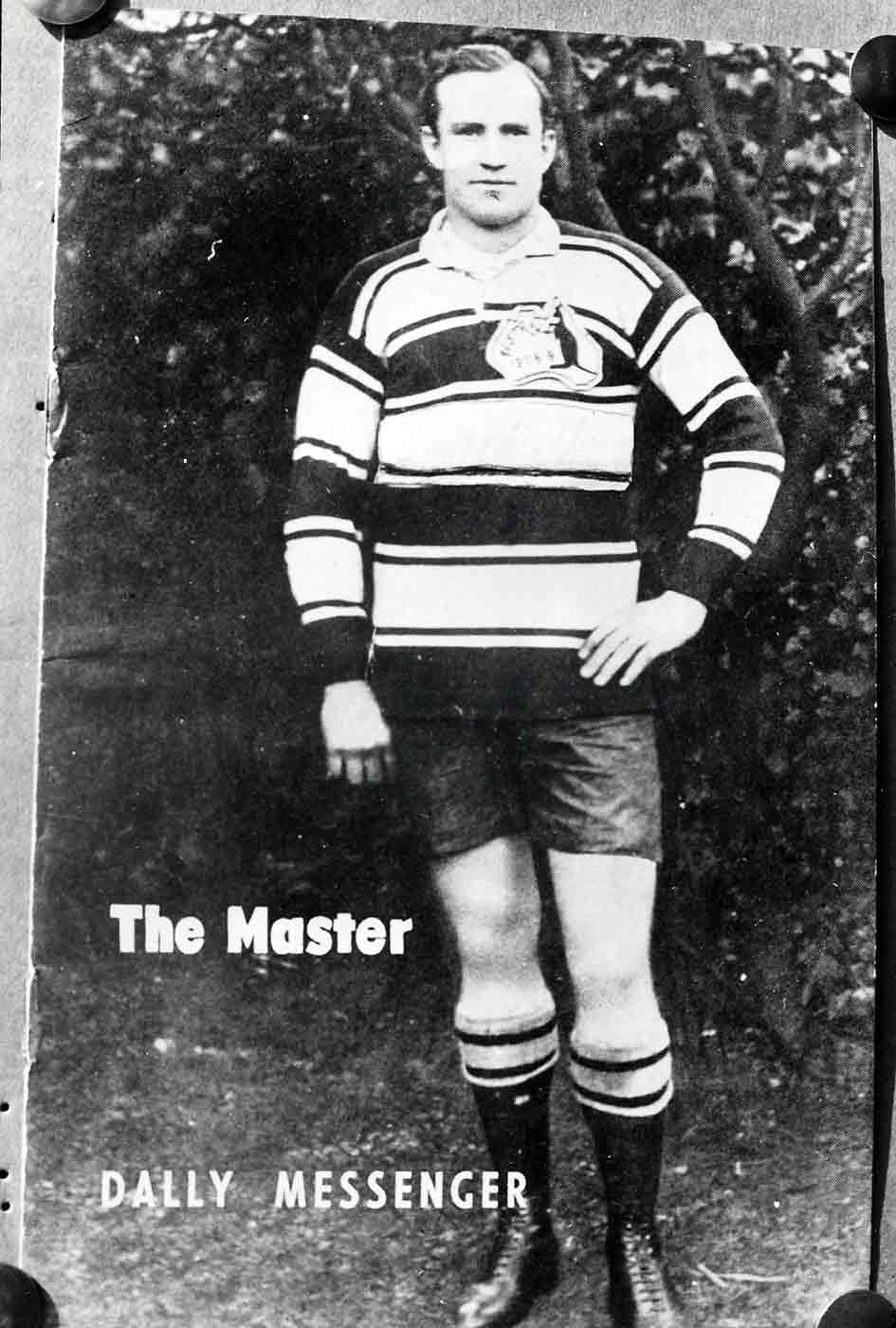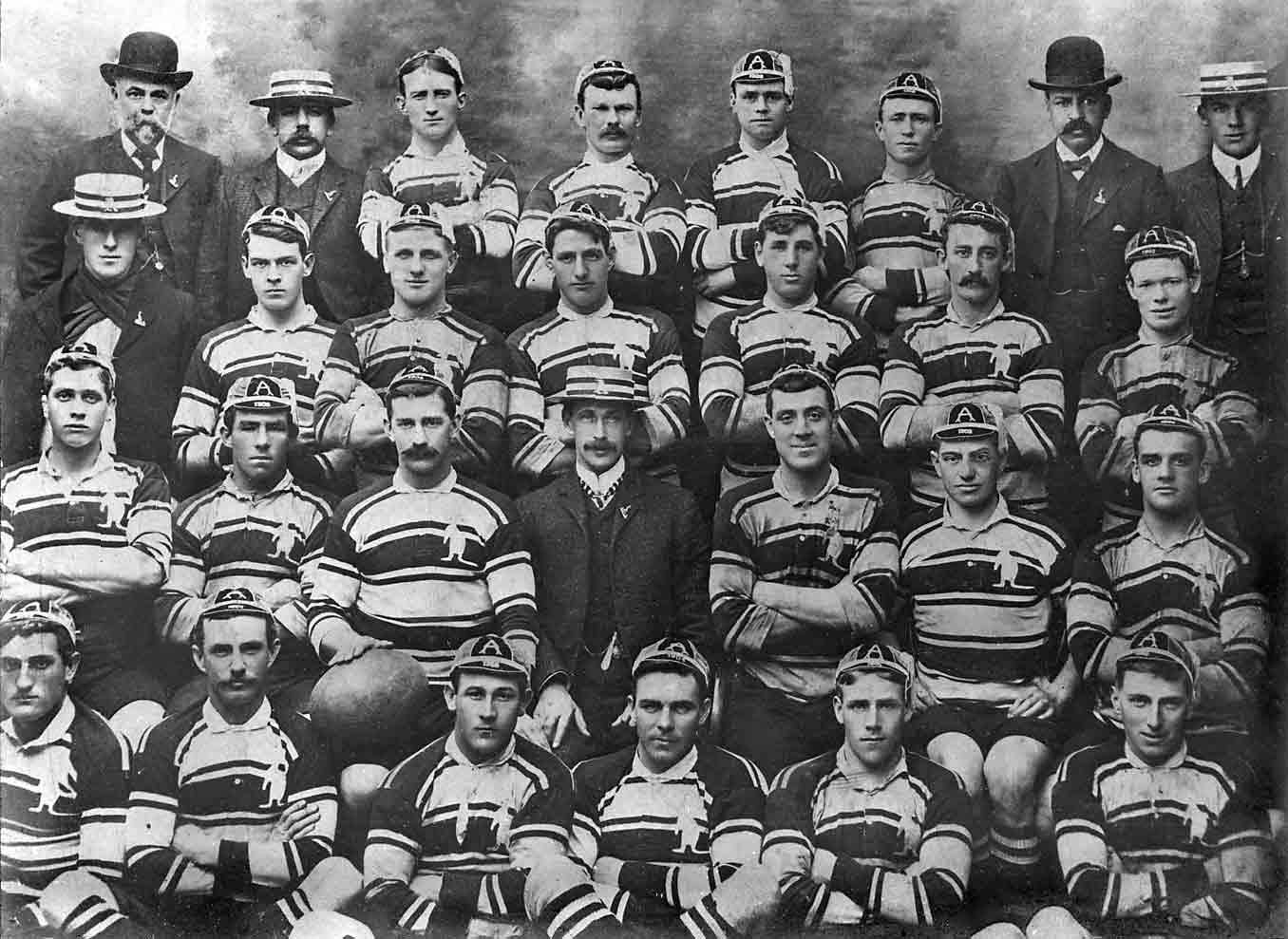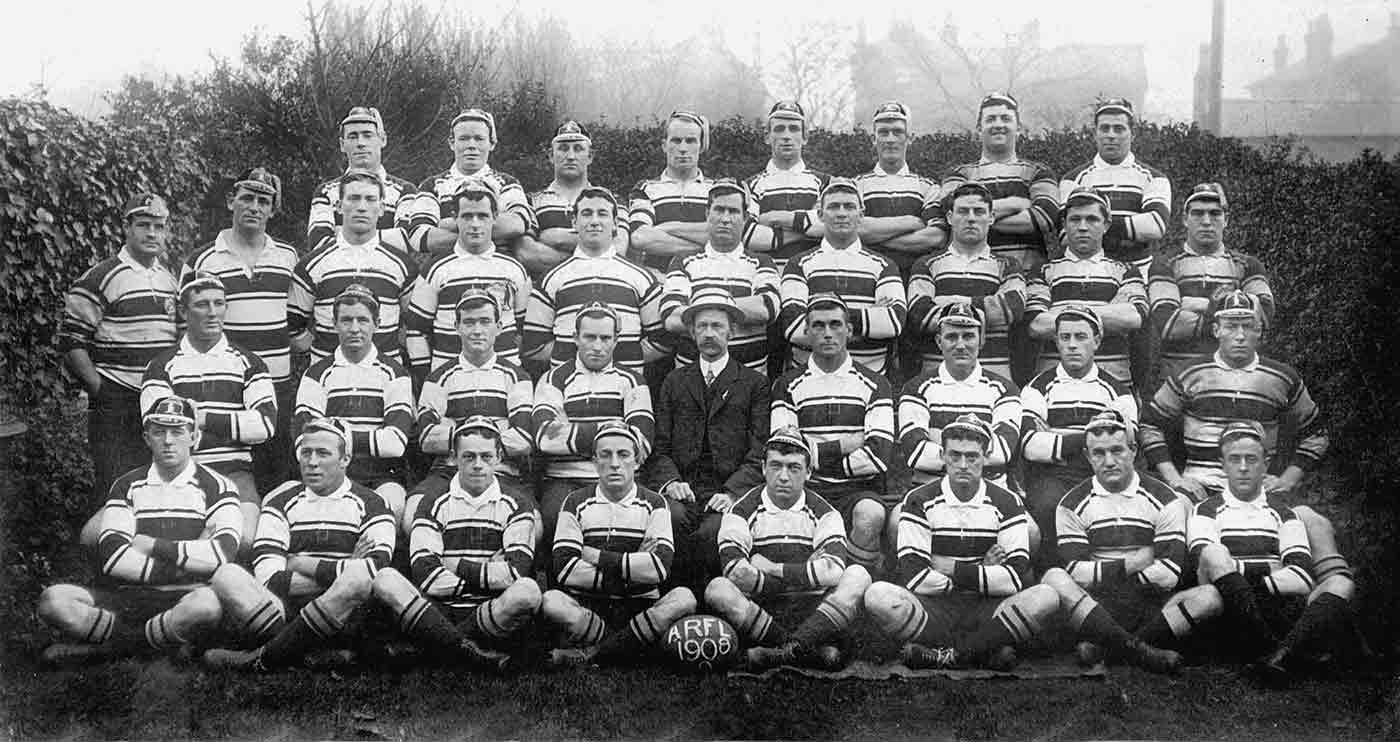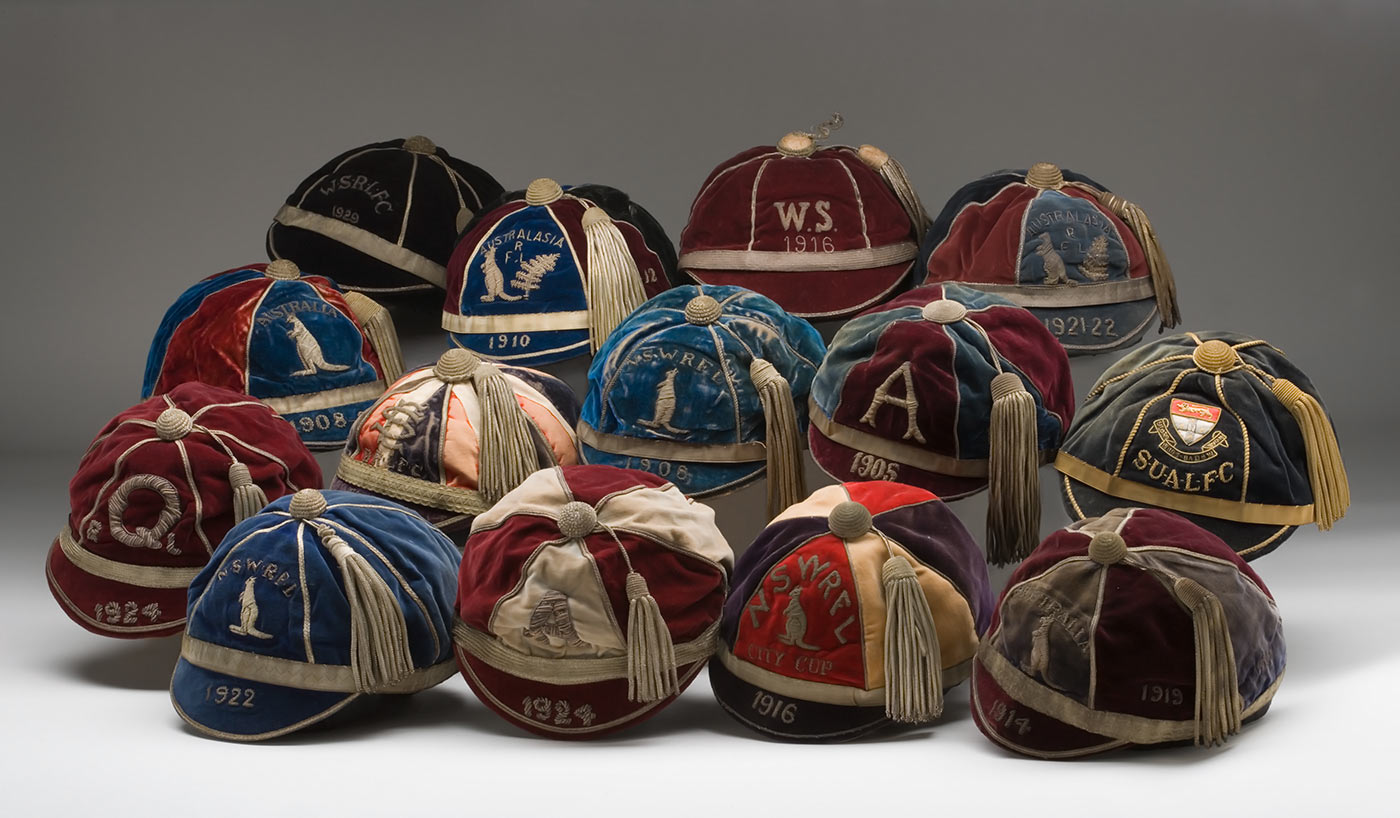Rugby league in Australia started as a rebel football competition established in defiance of the New South Wales Rugby Union.
With its mix of hardness and athleticism, it has grown to become one of the most popular of Australian sports, a skilful fast-moving game that has the passionate support of its fans. Here, we trace the early history of the game.
A gentleman’s game
The dominant code of football in New South Wales and Queensland in the 1890s was rugby union or, simply, ‘rugby’. Clashes between colonial sides attracted thousands of fans prepared to pay to see their sporting heroes.
Into the new century, however, discontent was spreading in the ranks of players with many calling for payment for lost time at work and insurance for sporting injuries. But rugby’s strong amateur ethos meant these calls for change were resisted.
The game begins
On 8 August 1907 a group of leading rugbyside, 1908. Sean Fagan union players and supporters met at Bateman’s Hotel, George Street, Sydney, to discuss the creation of the New South Wales Rugby Football League.
A key aspect of the new code was that players would be paid for playing the game.
Adopting the playing rules of the rebel Nortside, 1908. Sean Faganhern Union of England, the new competition began in earnest in Australia on Easter Monday, 20 April 1908.
All golds
A catalyst for the establishment of a breakaway code was the visit to Sydney of a professional New Zealand side in August 1907. Known as the All Golds and led by New Zealand football entrepreneur Albert Henry Baskerville, the New Zealand side was en route to England to play Northern Union teams.
Early supporters
James J Giltinan, a Sydney businessman, was one of the key proponents of the establishment of a new code of rugby. He was the first secretary of the new league and personally underwrote the 1908 Kangaroos tour of England.
Victor Trumper, a champion sportsman renowned for his cricketing prowess, was a passionate supporter of the new game. Players attracted to the new code were reassured by his involvement.
Henry Hoyle was the third key person to champion rugby league. A trade unionist and Labor politician, Hoyle helped to craft the rhetoric justifying the split from rugby union.
The master: Dally Messenger

A key figure in the early success of rugby league was the star New South Wales player Herbert Henry 'Dally' Messenger. Rugby union's greatest drawcard, his defection to rugby league added credibility to the new code. Messenger quickly emerged as rugby league's first superstar.
Dally Messenger's football career started as a five-eighth with the Eastern Suburbs Rugby Union Club in 1905. A player of rare talent, he quickly attracted a strong following among fans.
In 1906 he was selected to play for New South Wales and, in 1907, became a member of the Australian representative rugby union team, the Wallabies.
After an approach from JJ Giltinan and Victor Trumper, Dally switched allegiance from rugby union to rugby league in late 1907.
Dally joined the newly formed Eastern Suburbs Rugby League Football Club, leading them to premierships in 1911, 1912 and 1913. He also represented New South Wales and Australia, playing seven tests with the Kangaroos.
Foundation clubs
The first full season of rugby league in Australia was played in 1908. The first clubs to take the field were:
- Glebe
- Newtown
- Western Suburbs
- South Sydney
- North Sydney
- Balmain
- Eastern Suburbs
- Newcastle
- Cumberland
Rugby league quickly spread north with the establishment of the Queensland Rugby Association. Club football started in Queensland in 1909.
Test football pioneers
At the end of the 1908 season the first Australian representative rugby league side sailed for England. The Kangaroos struggled through the tour, losing 22 of the 45 matches they played. The tour also failed financially, and the players' return passage had to be paid for by the Northern Union.
Wallabies versus Kangaroos
The year 1909 saw the ultimate clash between the two rugby codes.
Returning from a successful tour of England, players from the Wallabies Australian Rugby Union representative side were enticed to play against a representative league side, despite the threat of being banned from playing rugby union.
In a series of 4 matches, the Wallabies and Kangaroos finished level, with two wins apiece. But rugby league was the winner, as the majority of the Wallabies' leading players defected to league, giving the new code a massive injection of talent.
Here to stay
After struggling through its first 2 years of competition, rugby league consolidated its position in 1910. Growing attendances at club games, interstate matches and international fixtures reflected the game's growing popularity and financial stability.
The highlight of the year was a visit by a touring English side, which was followed by an Australasian tour of Britain in 1911–12.
The game begins
Download historian Sean Fagan's League of Legends catalogue extract for more on the beginnings of the game.
- Download The game begins – Sean Fagan546.7 kb pdf [ PDF | 546.7 kb ]


